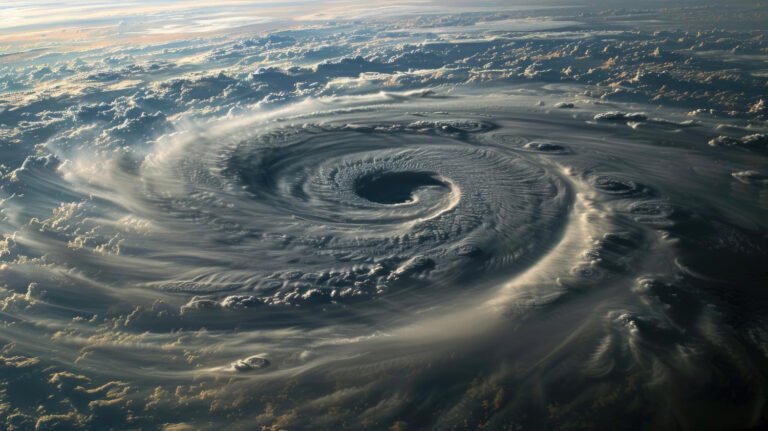Five I’s of Climate Change Impact on Child Health and a Framework for Action
Climate change poses a significant threat to children’s health globally. As climate conditions worsen, the impacts are becoming more severe and multifaceted, creating an urgent need to address the vulnerabilities of children. The American Academy of Pediatrics (AAP) identifies the “Five I’s” of climate change impacts on child health: Injury and Illness, Infections, Immune System Effects, Inequities, and Impact on Mental Health. This article will discuss these impacts and present a framework for action that healthcare providers, policymakers, and communities can adopt to safeguard children’s health in the face of climate change.
Five I’s of Climate Change Impact
1. Injury and Illness
Climate change is increasing the frequency and intensity of extreme weather events, such as hurricanes, wildfires, floods, and heatwaves. These events directly lead to injuries and illnesses among children. Due to their smaller physical size and developing bodies, children are more vulnerable to harm during such events. Immediate injuries during disasters, such as fractures or burns, are compounded by the long-term consequences of dislocation and exposure to unsanitary conditions.
2. Infections
Changing climate conditions, particularly rising temperatures and altered precipitation patterns, are expanding the range of vector-borne diseases such as Lyme disease and mosquito-borne infections like dengue, Zika, and malaria. Children are more susceptible to these infections due to their developing immune systems, and they often face greater risks when access to healthcare is limited.
3. Immune System Effects
Climate change has profound effects on children’s immune systems. Increased exposure to allergens (e.g., pollen from extended growing seasons) and pollutants (e.g., wildfire smoke, industrial emissions) can weaken immune defenses and increase susceptibility to respiratory conditions like asthma. As their immune systems are still developing, children are particularly vulnerable to these stressors, leading to chronic health issues.
4. Inequities
Climate change exacerbates existing health disparities, disproportionately affecting children from low-income communities and marginalized populations. These groups often have limited access to resources such as healthcare, clean water, and adequate housing, making them more vulnerable to the health impacts of climate change. Children in these communities are less likely to recover quickly from climate-related disasters, and they face heightened exposure to environmental hazards.
5. Impact on Mental Health
The psychological impacts of climate change are significant for children. Exposure to natural disasters, loss of homes, community disruption, and the existential threat posed by climate change can lead to anxiety, depression, and post-traumatic stress disorder (PTSD). Children are particularly sensitive to these psychological stressors, and the effects can manifest as behavioral changes, learning difficulties, and social withdrawal.
Framework for Action: Protecting Child Health
To address the wide-ranging effects of climate change on child health, the AAP proposes a multi-level framework for action that involves healthcare providers, policymakers, community leaders, and families. The following components outline key actions that can help protect children from climate change-related health risks:
1. Advocacy and Policy Change
Healthcare providers and pediatricians can play a vital role in advocating for climate-smart policies that prioritize children’s health. This includes pushing for stricter emissions standards, better disaster preparedness plans, and investments in clean energy infrastructure. Policy advocacy also involves ensuring that the most vulnerable children are included in climate adaptation and mitigation plans.
2. Strengthening Health Systems
Healthcare systems must be equipped to handle the increasing burden of climate-related health issues among children. This includes improving access to care in disaster-affected areas, training healthcare professionals in climate-related health risks, and developing child-focused emergency response protocols. Strengthening healthcare systems also requires creating stronger networks between local health authorities, schools, and community organizations.
3. Education and Awareness
Raising awareness among parents, children, and communities about climate change and its health impacts is essential. Schools and healthcare providers should provide educational programs that focus on how children and families can reduce their exposure to climate risks, such as staying hydrated during heatwaves or using mosquito nets to prevent vector-borne diseases. By increasing awareness, communities can better protect children and build resilience against future climate impacts.
4. Enhancing Resilience in Communities
Community resilience-building measures are critical for protecting children from climate-related impacts. This can involve constructing climate-resilient housing, ensuring access to clean drinking water, and creating green spaces that reduce urban heat island effects. Community-based initiatives like urban gardens, local air quality monitoring, and neighborhood disaster response teams can also help enhance resilience and provide safe environments for children.
5. Integrating Mental Health Support
Given the significant mental health impacts of climate change on children, it is crucial to integrate mental health support into climate adaptation plans. This includes providing mental health resources in schools and pediatric healthcare settings, training healthcare providers to recognize and address climate-related psychological stress in children, and promoting family counseling in communities affected by natural disasters.
Conclusion
Children are among the most vulnerable populations affected by climate change, facing direct health impacts from extreme weather events, increased exposure to vector-borne diseases, respiratory issues due to pollutants, and psychological stress. Addressing these challenges requires a comprehensive approach involving advocacy, education, healthcare strengthening, community resilience, and mental health support. By taking immediate action, we can ensure a safer and healthier future for children in the face of our changing climate.
Key Takeaways for Action
- Injury and Illness: Protect children from the increased frequency of climate-related disasters by improving disaster preparedness and healthcare access.
- Infections: Tackle the rise of vector-borne diseases by expanding healthcare resources and enhancing public awareness.
- Immune System Effects: Minimize exposure to allergens and pollutants that harm children’s immune systems through stricter air quality standards.
- Inequities: Address climate-related health disparities by ensuring vulnerable communities receive the resources they need to adapt and recover.
- Impact on Mental Health: Integrate mental health services into pediatric healthcare and community support systems to address the psychological toll of climate change.
For further details see the original article in the AAP Pediatrics journal: Five I’s of Climate Change and Child Health: A Framework for Action.







